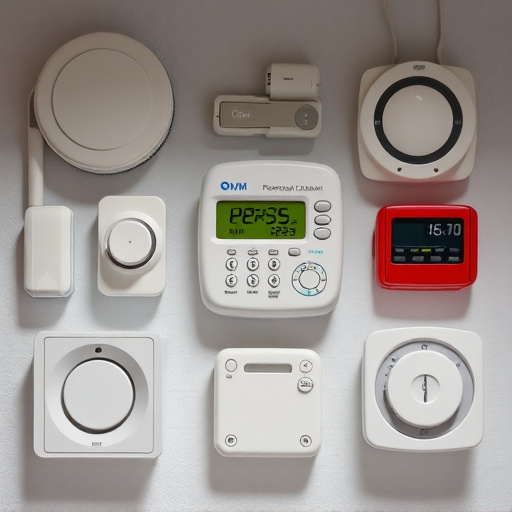Compact personal attack alarms, designed for discreet carry and easy activation, provide powerful sounds within 60-100 decibel range to deter threats and attract help. Effective in urban settings, walks at night, outdoor activities, and home security, they offer crucial seconds for escape or emergency response. Legal considerations and regular testing ensure responsible usage for optimal personal safety.
In today’s unpredictable world, personal safety is paramount. Compact noise-making devices, specifically designed for self-defense, offer a discreet yet powerful solution. This article explores the transformative potential of these innovative tools, focusing on their sound quality and range as key features. We’ll delve into real-world use cases, uncover legal considerations, and provide best practices for carrying personal attack alarms effectively. Understanding these compact devices could be your best line of defense.
- Understanding Compact Noise Devices for Personal Safety
- Key Features: Attack Alarm Sound Quality and Range
- Effective Use Cases for Personal Defense Devices
- Legal Considerations and Best Practices for Carrying Alarms
Understanding Compact Noise Devices for Personal Safety
Compact noise-making personal safety devices, often in the form of portable alarms or whistles, are innovative tools designed to enhance individual security in various situations. These devices are meticulously engineered to produce a powerful yet controllable sound, serving as a deterrent and a means of drawing attention during potential threats. The primary function is to emit a loud and sudden noise, typically within a specific range, known as the personal attack alarm sound range, which can startle an assailant and alert nearby individuals or authorities.
The key advantage lies in their portability and discreteness, allowing users to carry them conveniently without drawing excessive attention. These devices are particularly useful in situations where one might feel vulnerable, such as walking alone at night, facing a potential assault, or even during outdoor activities. By simply activating the alarm, individuals can create a loud noise that surprises and disorientates aggressors, providing crucial seconds for escape or help to arrive.
Key Features: Attack Alarm Sound Quality and Range
When it comes to personal safety, one of the most crucial components is a compact noise-making device, specifically designed for emergency situations. These devices are often in the form of personal attack alarms, which serve as a powerful deterrent and distress signal. A key feature to focus on is the sound quality and range; an alarm with a loud, piercing tone can startle assailants and draw attention, ensuring help arrives quickly.
The effectiveness of these alarms heavily relies on their sound output. High-quality audio ensures that the alarm is audible over a good distance, allowing potential bystanders to hear and respond. A range of 60-100 decibels is generally recommended for personal attack alarms, providing enough volume without causing hearing damage. This feature is essential for effective deployment in various environments, from urban streets to remote areas.
Effective Use Cases for Personal Defense Devices
Personal defense devices, often equipped with a powerful personal attack alarm sound range, have proven effective in various scenarios for enhancing individual safety. In crowded urban settings or during late-night walks, these compact tools can serve as a deterrent against potential threats. The high-decibel alarms are designed to draw immediate attention and alert nearby individuals, potentially scaring off aggressors.
For instance, when facing an unexpected assault, activating such a device can startle the assailant, providing the user with crucial time to escape or seek help. Moreover, in situations where one feels uncomfortable or lost in unfamiliar areas, the mere presence of these devices can offer psychological reassurance and empower individuals to navigate safely. The wide sound range ensures that assistance can be summoned promptly, making them ideal for outdoor adventures, commuting, or even home security measures.
Legal Considerations and Best Practices for Carrying Alarms
When considering a compact noise-making personal safety device, such as an alarm, users must be mindful of local laws and regulations. Many jurisdictions have specific rules regarding the carrying and use of alarms or personal protection devices to prevent false alerts and ensure responsible usage. It’s crucial to check with your local law enforcement or city hall to understand restrictions on decibel levels, permissible times for activation, and where it’s legal to carry such a device.
Best practices for carrying a personal attack alarm include keeping it easily accessible yet discreet. This might mean attaching it to your key chain, pocket, or bag so that you can quickly activate it if needed. Regularly test the device to ensure it’s functioning properly, and familiarize yourself with its sound range—a critical factor in ensuring others within earshot are alerted to a potential danger. Remember, responsible carrying involves understanding both legal boundaries and practical applications for maximum personal safety.
Compact noise making personal safety devices, such as attack alarms, offer a practical solution for individuals seeking effective self-defense. With their powerful sounds and impressive range, these devices can deter potential attackers and provide crucial time to escape. Understanding key features, optimal use cases, and legal considerations ensures responsible carrying practices. Investing in a compact personal attack alarm with superior sound quality and range can significantly enhance one’s safety, making it a wise choice for those prioritizing self-defense in today’s world.
